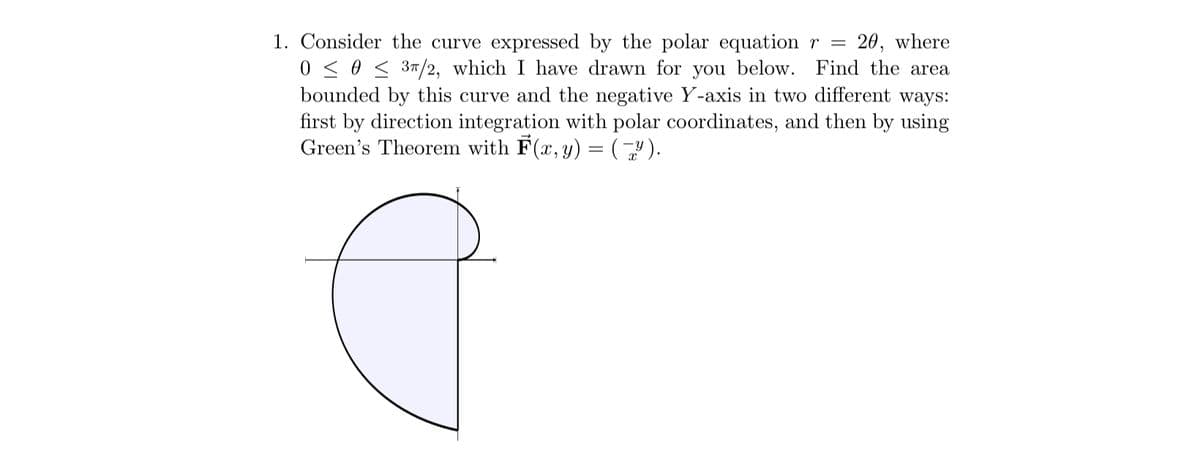1. Consider the curve expressed by the polar equation r = 20, where 0 ≤ 03/2, which I have drawn for you below. Find the area bounded by this curve and the negative Y-axis in two different ways: first by direction integration with polar coordinates, and then by using Green's Theorem with F(x, y) = (Z).
1. Consider the curve expressed by the polar equation r = 20, where 0 ≤ 03/2, which I have drawn for you below. Find the area bounded by this curve and the negative Y-axis in two different ways: first by direction integration with polar coordinates, and then by using Green's Theorem with F(x, y) = (Z).
Algebra & Trigonometry with Analytic Geometry
13th Edition
ISBN:9781133382119
Author:Swokowski
Publisher:Swokowski
Chapter11: Topics From Analytic Geometry
Section: Chapter Questions
Problem 20T
Related questions
Question

Transcribed Image Text:1. Consider the curve expressed by the polar equation r = 20, where
0 ≤ 0 ≤ 3π/2, which I have drawn for you below. Find the area
bounded by this curve and the negative Y-axis in two different ways:
first by direction integration with polar coordinates, and then by using
Green's Theorem with F(x, y) = (Y).
Expert Solution
This question has been solved!
Explore an expertly crafted, step-by-step solution for a thorough understanding of key concepts.
This is a popular solution!
Trending now
This is a popular solution!
Step by step
Solved in 3 steps with 3 images

Recommended textbooks for you

Algebra & Trigonometry with Analytic Geometry
Algebra
ISBN:
9781133382119
Author:
Swokowski
Publisher:
Cengage

Algebra & Trigonometry with Analytic Geometry
Algebra
ISBN:
9781133382119
Author:
Swokowski
Publisher:
Cengage